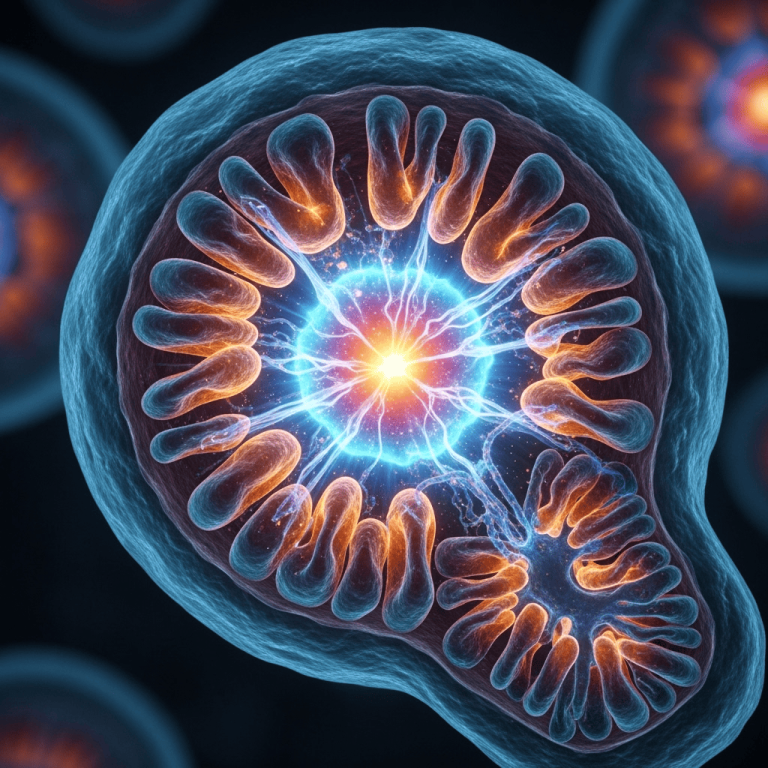The Genetic Chaos Theory: Is a Hidden Glitch in Your DNA Accelerating Your Aging?
We all know the external signs of aging—wrinkles, gray hair, declining energy. But what if I told you that the real battle for youth is fought on a much deeper level, at the very core of your genetic code? The latest scientific discoveries are shedding light on a powerful, yet previously underestimated, mechanism that may be a key driver of aging. This isn’t about slow wear and tear. This is about genetic chaos.
Your Enemy Within: What Are “Jumping Genes”?
Lurking inside your DNA, making up nearly half of it, are ancient genetic sequences called transposons, or colloquially, “jumping genes.” They are remnants of ancient viruses that integrated themselves into our genome over millions of years. For most of our lives, they are kept in check by the body’s advanced defense mechanisms, dormant and harmless. Think of them as old, unused code in a computer program.
When the Guards Fall Asleep: The Loss of Control with Age
The problem begins when these control mechanisms—our “epigenetic guards”—start to weaken with age. Under the influence of factors like oxidative stress, environmental toxins, or a poor lifestyle, the locks begin to fail. The dormant “jumping genes” awaken and start doing what they do best: copying and pasting themselves into new, random locations within our DNA.
The Cascade of Destruction: How Genetic Chaos Ages Your Body
This seemingly small change triggers a powerful cascade of destructive effects that scientists are only now fully understanding:
- Direct DNA Damage: Each “jump” can potentially damage an important gene, leading to mutations and cellular dysfunction. It’s like randomly deleting snippets of crucial code, making the entire system unstable.
- Immune Alarm and Chronic Inflammation: When a cell detects these “foreign” DNA fragments floating where they shouldn’t be, it reacts as if it’s been invaded by a virus. It triggers a powerful immune alarm (via the cGAS-STING signaling pathway), leading to a constant, simmering state of inflammation throughout the body. This condition, known as “inflammaging,” is recognized as a primary cause of age-related diseases.
- The “Zombie Cell” Epidemic: Under the constant assault of damage and inflammation, more and more cells enter a state of senescence. They become “zombie cells”—they don’t die, but they stop dividing properly and instead secrete harmful substances that poison neighboring healthy cells and fuel further inflammation.
Can We Regain Control? The Science of Silencing the Chaos
This knowledge, while unsettling, provides us with a powerful new weapon. Since we know what weakens our “guards,” we can actively support them. Research suggests that key lifestyle interventions can help keep “jumping genes” dormant:
- Intelligent Nutrition: A diet rich in polyphenols (found in berries, green tea, dark chocolate, etc.) and other bioactive compounds supports epigenetic stability.
- Strategic Fasting and Caloric Restriction: Intermittent fasting has been shown to activate intracellular repair pathways and help “silence” transposon activity.
- Movement and Regeneration: Regular physical activity, adequate sleep, and stress management are the foundations that strengthen the body’s natural defense mechanisms at the cellular level.
The science of aging is complex, but your path to a longer, healthier life doesn’t have to be. Your daily habits are writing your genetic story. Want to see what that story looks like?
Take our survey to analyze your lifestyle and discover your personal longevity potential!
On LINE-1 retrotransposons and aging: De Cecco, M., et al. (2019). L1 drives IFN in senescent cells and promotes age-associated inflammation. Nature, 566(7742), 73–78.
On the cGAS-STING pathway in senescence: Glück, S., et al. (2017). Innate immune sensing of cytosolic chromatin fragments through cGAS promotes senescence. Nature Cell Biology, 19(9), 1061–1070.
On inflammaging: Ferrucci, L., & Fabbri, E. (2018). Inflammageing: chronic inflammation in ageing, cardiovascular disease, and frailty. Nature Reviews Cardiology, 15(9), 505–522.







